Conclusion for Juvenile Delinquency
Howard Becker in 1966 identified four categories of juvenile delinquency namely individual group-supported organised and situational delinquency. Indian governments are working to better the situation in India when it comes to juvenile crime.
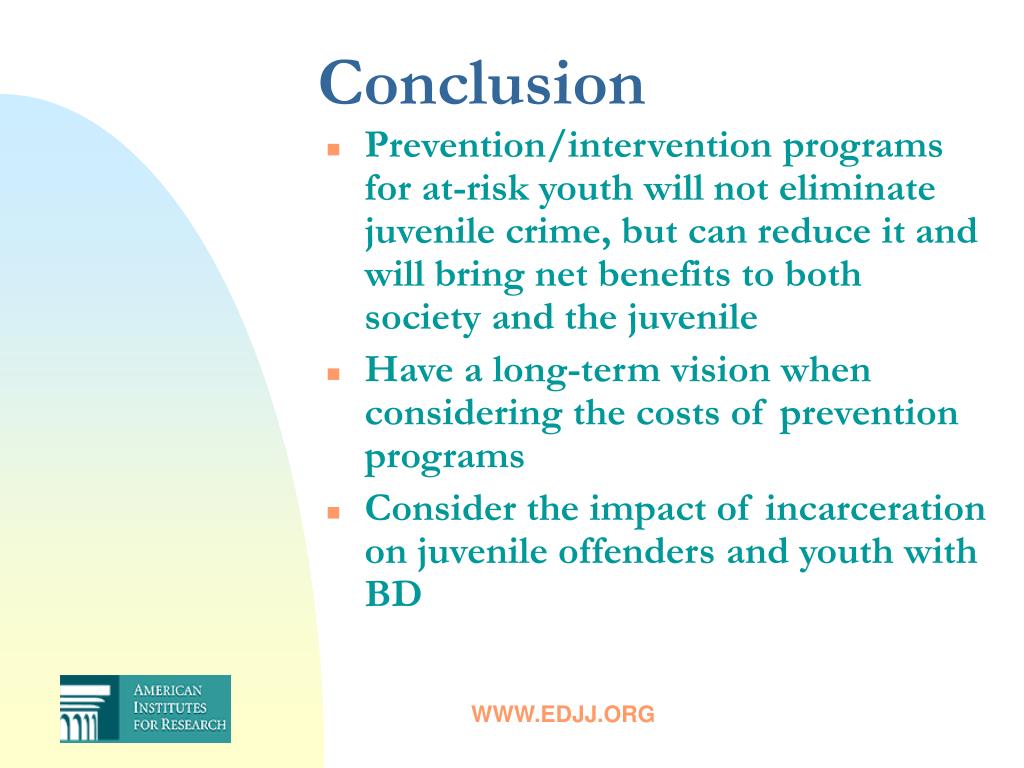
Ppt Examining The Costs And Benefits Of Effective Juvenile Delinquency Programs For Youth With Bd Powerpoint Presentation Id 631725
1 Any juvenile who has committed an act other than a traffic offense which would constitute a misdemeanor or an infraction under the laws of this state or violation of a city or village ordinance and who beginning July 1 2017 was eleven years of age or older at the time the act.
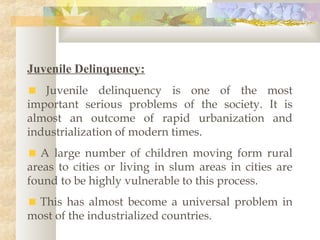
. First factorage and social background of the juvenile. Juvenile delinquency is caused by a number of factors that include peer influence influence by the family of the juvenile race and other related factors like low self-esteem and trauma. Table 1 - Juvenile delinquency risk factors associated with family according to age of children and adolescents.
At the conclusion of the preliminary hearing the charges are dismissed waived to court or held for court and referred onto the Court of Common Pleas. Second factorthe nature of the alleged offense. I am the executive vice president of MDRC a unique nonpartisan social policy research and demonstration organization dedicated to learning what works to improve the well-being of disadvantaged familiesWe strive to achieve this mission by conducting real world.
Although juvenile crime has decreased in recent years there are still certain. The juvenile court in each county shall have jurisdiction of. Cumulative and interactive effects of risk factors.
State Police said 20-year-old Tracey Naquin who worked as a corrections master sergeant at Raymond Laborde Correctional Center in Cottonport was arrested after soliciting a juvenile on social media. At the conclusion of the intake evaluation which must be completed within 30 days the counselor has. The overall purpose of the study was to explore the relationship between various family-related factors and crime.
The study also attempted to ascertain whether those factors can act as causative agents for juvenile delinquency. Increasing youth violence has become a national concern and juvenile arrests are on the rise. 9 To a speedy trial and a prompt and final conclusion of the case and any related post-judgment proceedings.
People with this condition will rarely admit that their beliefs are delusions or are. Schweinhart and Weikart 1997. Guide for Implementing the Comprehensive Strategy for Serious Violent and Chronic Juvenile Offenders Office of Juvenile Justice and Delinquency Prevention June 1995.
Juvenile delinquency isnt just a legal issue that can be taken care of by law but a major social problem that requires urgent attention. Youth under the age of 18 who are accused of committing a delinquent or criminal act are typically processed through a juvenile justice system 1While similar to that of the adult criminal justice system in many waysprocesses include arrest detainment petitions hearings adjudications dispositions placement probation and reentrythe juvenile justice process. Also unlike a criminal conviction an adjudication of delinquency is not a public record.
Third factorthe extent and nature of the juveniles prior delinquency records and social background of the juvenile. Chairman Brownback Senator Lautenberg and Members of the Subcommittee. Families that present risk factors for juvenile delinquency must be considered as a complex reality influenced by various risk factors.
The long-term impact of cognitively oriented preschool programs on the reduction of antisocial behavior is a more direct indication that fostering early cognitive development can play an important role in the prevention of juvenile delinquency Schweinhart et al 1993. From the discussion above it is clear that delinquency is an enormous problem in the society. 10 To provide information to a probation department official conducting a presentence investigation concerning the impact of the offense on the victim and the victims family and any sentencing recommendations before the sentencing.
In conclusion juvenile justice prevention programs such as prenatal and early childhood nurse visitation programs and Head Start are largely successful at deterring crime for the children involved because they occur early in the childs development and because they focus on holistic and general aspects of the childs life rather than. Between 1984 and 1993 arrests of juveniles for violent offenses rose by nearly. Delusional disorder is a challenging condition to treat.
An adjudication of delinquency in juvenile court is not a conviction of a crime nor does it cause the juvenile to forfeit any citizenship rights. The study postulated that although there are different factors that impact on the development of child character the family plays a central role in. In addition it handles child and spousal support matters child custody matters juvenile delinquency juvenile dependency and Orphans Court matters.
I pray this drama in its ten episodes succeeds in casting the needed attention and more importantly to relay the message that punishment shouldnt only be about imprisonment but also development and reform. My name is Gordon Berlin. Fourth factorthe juveniles present intellectual development and psychological maturity.
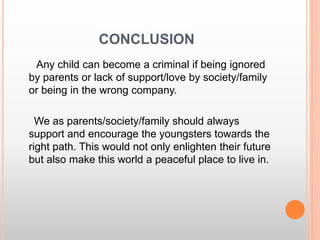
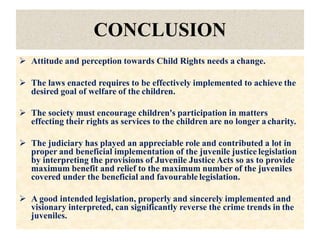
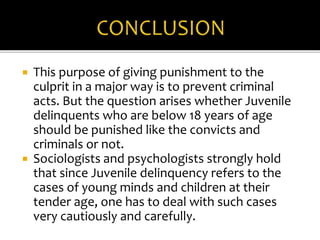
No comments for "Conclusion for Juvenile Delinquency"
Post a Comment